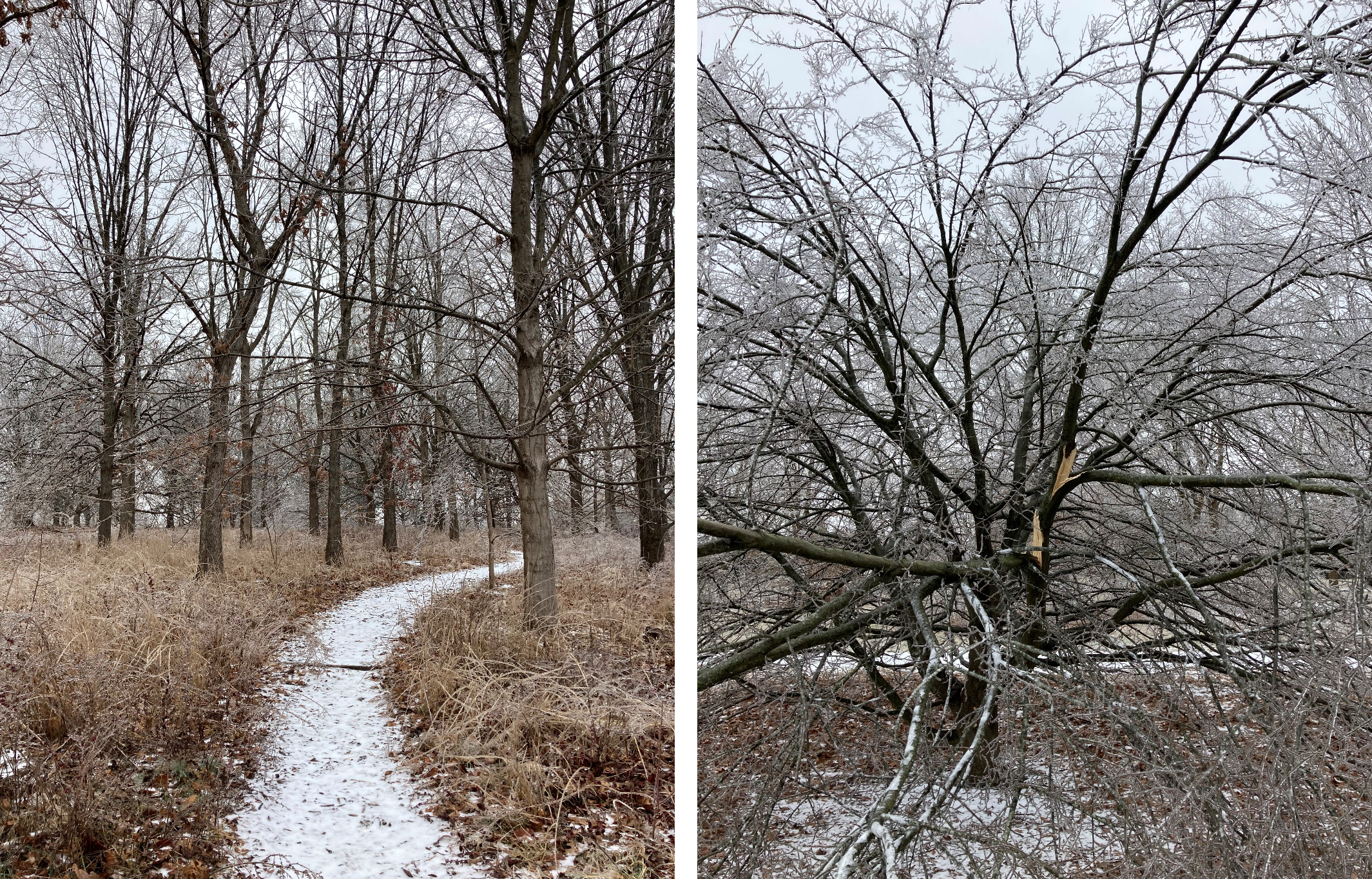Winter Wonderland Weather
Winter Wonderland Weather

With the recent winter storm that just hit Central Kentucky, we thought it would only be appropriate to compare this event to other ice storm events of the past, and see how it affected The Arboretum. In short, we got really lucky this year! But before we talk about this most recent event, let’s delve a little more into two of the most extensive ice storm events since 2000: the 2003 Bluegrass Ice Storm and 2009 Ohio Valley Ice Storm.
The Bluegrass Ice Storm of 2003 began in the middle of February when a cold rain changed into an overnight freezing rain event. Temperatures continued to drop throughout the night, and people woke up to nearly an inch of ice covering everything – trees, automobiles, power lines, houses and roads/sidewalks. At the time, I was a Horticulture student at UK, and I personally witnessed the destruction. Massive pin oaks fell over at the base, with their root systems completely upheaving sidewalk panels and flipping the concrete 90 degrees. This is the ice event where we lost our beloved 250-year-old bur oak, located within the Arboretum Woods. This giant tree can still be seen as a fallen remnant, and beside it is an educational sign that describes a historical timeline as it relates to the tree’s growth rings.
The Ohio Valley Ice Storm of 2009 began in late January as a freezing drizzle, and the precipitation would change over to snow and back to freezing rain over a period of three days. This event was widespread throughout the state and is the cause for Kentucky’s largest power outage on record, with over 600,000 homes or businesses reporting a lack of power. Local arborists recall that while this ice storm had major impacts to our local trees, the storm of 2003 was “way worse.”
While ice and snow events can be utterly destructive for our property and infrastructure, they can also be incredibly beautiful when these events are more restrained. This appears to be the case for the recent five-day stretch of snow, sleet and freezing rain that came down over Central KY – Lexington avoided the worst of it. All of the ingredients were there for a fairly significant ice storm; however, the temperatures were not quite cold enough for the initial rain and sleet to freeze. What a relief!
So we were happy to wake up to only minor to moderate damage to a handful of trees and shrubs along the Walk Across Kentucky (WAKY). There were a few broken branches here and there, some hanging limbs in the canopy and lots of dead fallen wood that made its way down to the ground. One of our musclewood (Carpinus caroliniana, pictured below) located in the West Knobs Region did have some moderate damage to a significant limb or two in its canopy. We are hopeful that with some properly timed restoration pruning, it will eventually recover and rebalance its canopy.
Without the destructive accumulations, it was great to experience this weather event for the sheer beauty of it. One particularly beautiful scene could be seen throughout the Arboretum Woods scattered along the forest floor – coralberry (Symphoricarpos orbiculatus, pictured above) arching over with the weight of 1/4” of ice on each stem, with frozen clusters of coral-red drupes encapsulated in the ice. These small native shrubs often spread by stolons, or runners, and grow into dense thickets that is likely beneficial for wildlife habitat. We particularly love this plant in the Arboretum Woods for its vigorous spreading habit, as that assists us in our restoration efforts when we remove invasive plants such as purple wintercreeper (Euonymus fortuneii).

